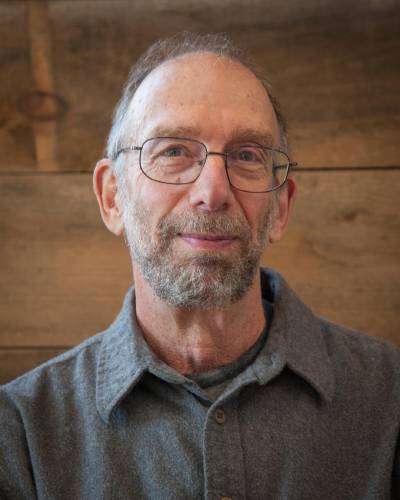An argument for single payer health insurance: How government run insurance would help our schools

SELWYN Contributed photo/Trish Crapo
| Published: 03-28-2025 2:55 PM |
Anguished cries coming out of school administration offices and school committee meetings signal the annual return of budget season. School district decision makers across the state desperately try to create budgets that serve the needs of all of their children. The money coming from the state and the drained treasuries of their local towns is nowhere near enough to cover the actual cost of educating the children.
There is a clear need to re-examine the Chapter 70 funding formula, and many are urging a re-consideration of how the state handles charter school and school choice tuition. There is another place we can look for more money, from a most unlikely source: single payer health insurance.
Rep. Lindsay Sabadosa has filed a bill (HD 1228, SD 2341) for the state to move to a single payer, government run insurance plan that would save school districts and towns millions of dollars while offering better insurance for everyone. It will also, incidentally, improve the education of our children. Let me explain.
Roughly 75% to 80% of a school district’s budget is salaries and benefits. These costs are negotiated and agreed to by each district and workforce. Insurance costs run into the millions for most districts of any size; Greenfield’s is approximately $4 million a year, which is proportionately about the same as what other districts are paying. These insurance policies are with private insurance companies, and to be clear, private insurance companies are businesses; they exist to make a profit, not to provide health care. They are obligated by law to put at least 80% to 85% of the money they collect toward health care; the other 15% to 20% goes towards their costs and towards profits.
When we talk of profits we are talking about tens of billions of dollars every year, that go from our pockets into compensation packages for their CEOs and to stockholders. That’s money that school districts pay that does nothing to improve the health or education of our children or the lives of those who work with them. For example, United Health Care, one of the leading insurance agency in terms of profits, rejects one out of every three claims; that’s how they make their money. The less they pay out, the more money they make. Many have accused them of practicing medicine without a license, deciding who should and who should not receive the care their doctors have prescribed. Single payer is different.
Single payer, or government run insurance, is not a new idea; more than 32 relatively wealthy countries around the world have some version of single payer, government run insurance. We as a country currently pay more than twice as much for our health coverage than other countries do, and the health of our population is rated no better than 35th best in the world. The organization Mass Care has advocated for single payer insurance for more than 20 years, insisting that we would have better health while paying less, which would mean more dollars available to schools and towns. So how does this work and how realistic is it as a possibility?
The Mass Care website (masscare.org) has a section labeled education; under that tab click “frequently asked questions” to get an idea of how the program would work. The state would establish a trust fund that would fund the state’s insurance program. Corporations and businesses would contribute a payroll tax of 7.5% (8% if they have more than 100 employees); employees would pay a 2.5% payroll tax into that same fund. Money that comes into the state for Medicare and Medicaid payments would also go into that fund. And that’s it. There would be enough money in the trust fund to cover everyone in Massachusetts for the medical care they need, whether they are working or not, with no co-pays, and no additional expenses. You get to choose your own doctors; the government does not tell you who to see.
And where does the money come from to pay for all of this? Estimates are that overhead for single payer would be approximately 2%, as compared to the 20% currently enjoyed by private insurance. With single payer, no one makes profit off of our illnesses; instead of paying for fat compensation packages of CEOs and padding the bank accounts of stockholders, the money we pay goes directly to our health care. In addition, the government would have leverage to negotiate drug prices and the prices charged by hospitals, which continue to rise astronomically.
Article continues after...
Yesterday's Most Read Articles
 Driver taken to Springfield hospital after 18-wheeler rollover in Shutesbury
Driver taken to Springfield hospital after 18-wheeler rollover in Shutesbury
 Removed Bridge of Flowers plants to have second act through annual plant sale
Removed Bridge of Flowers plants to have second act through annual plant sale
 My Turn: ADUs — The owner is gone, and so is granny
My Turn: ADUs — The owner is gone, and so is granny
 Greenfield native Kate Bitters runs Boston Marathon to support Dana-Farber and late father
Greenfield native Kate Bitters runs Boston Marathon to support Dana-Farber and late father
 Hilchey bests Wolfram for Deerfield Selectboard seat
Hilchey bests Wolfram for Deerfield Selectboard seat
 Northfield man dies in Erving motorcycle crash; Bernardston man injured in Deerfield crash
Northfield man dies in Erving motorcycle crash; Bernardston man injured in Deerfield crash
We did an estimate of how much four local school districts would save according to the Mass Care formula and it is eye opening. Greenfield and Mohawk Trail would each save over $3 million every year; Athol/Royalston, a smaller district, would save approximately $2 million. Pioneer would save just under $2 million per year. The addition of a small payroll tax for employees usually generates some initial resistance but when working through the numbers it is clear that the payroll tax is significantly less than the cost of insurance we are now paying, and results in better medical care.
An added bonus is that single payer improves the education our children receive. Families who currently lack insurance or who are under-insured will be able to get their children the medical care their need when they need it, rather than having to wait until things get bad enough to go to the emergency room. With proper care, our children will be able to come to school ready and able to learn rather than suffering from medical challenges their families can’t afford to address. A number of superintendents I spoke with said that toothaches are one of the most significant reasons why children miss school, and why they are not paying full attention to their lessons. Offering families the opportunity to get the care they need means we are improving the education that all children are getting.
It seems pretty simple: better health care for less and better education for the kids. So why don’t we have single payer already? As always, it’s complicated. As Rep. Sabadosa said, we have a tendency in this country to turn everything into a business, and we have done that with our health care, which is about making money above all else. In addition, insurance companies have very strong lobbyists who are only too happy to donate the dollars we pay in premiums to politicians who return the favor by voting against adopting a single payer model. And, to be fair, it is complicated. There are businesses of different sizes, public and private; there are federal dollars that need to be included and accounted for; and there is a fear of the unknown. What happens if we try this and it doesn’t work. What then?
Single payer advocates point out that our current system doesn’t work all that well, especially for those who are poor. Health costs are skyrocketing, four in 10 in Massachusetts are struggling to pay health care costs, even those with insurance, and many simply have given up going to the doctor. Our version of rationing health care is economic; many can’t afford the care they need. It’s a challenge, but single payer is possible: we have the examples of more than 30 countries around the world that have made it work.
It’s important to recognize that single payer is popular with the public. Mass Care has carried out more than 20 non-binding ballot questions around the state over the past couple of elections and it has passed in every one, including districts won by Republicans as well as Democrats. Better health care for less money is not a partisan issue, and it will lead to better education for all of our students as well. As we struggle to meet the needs of our children, single payer health care is an intriguing option that I urge people to research. You can find information about single payer at masscare.org, and you can find the text of the bill that Rep. Sabadosa has filed at https://malegislature.gov/Bills/194/HD1228.
Doug Selwyn taught at K-12 public schools from 1985 until 2000 and then at university as a professor of education until he retired in 2017. He is the chair of the Franklin County Continuing the Political Revolution education task force. You can reach him at dougselwyn12@gmail.com.






 Sounds Local: Delmhorst’s new album features some unexpected additions
Sounds Local: Delmhorst’s new album features some unexpected additions Speaking of Nature: Motivated mother mink
Speaking of Nature: Motivated mother mink Conway Historical Society to explore ‘forgotten Founding Father’ Joseph Hawley
Conway Historical Society to explore ‘forgotten Founding Father’ Joseph Hawley Fun Fest to showcase day of music in Turners Falls on May 10
Fun Fest to showcase day of music in Turners Falls on May 10
